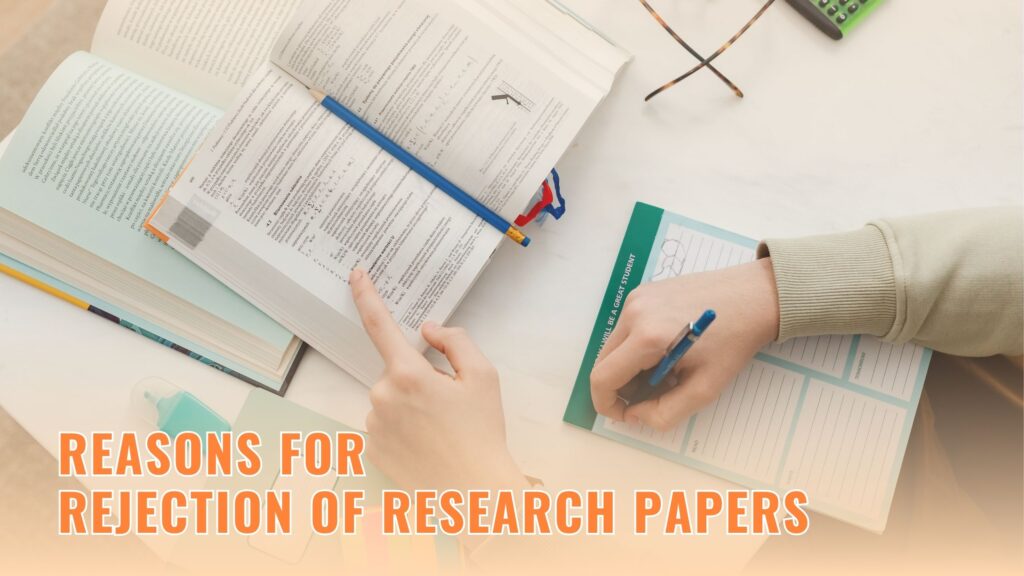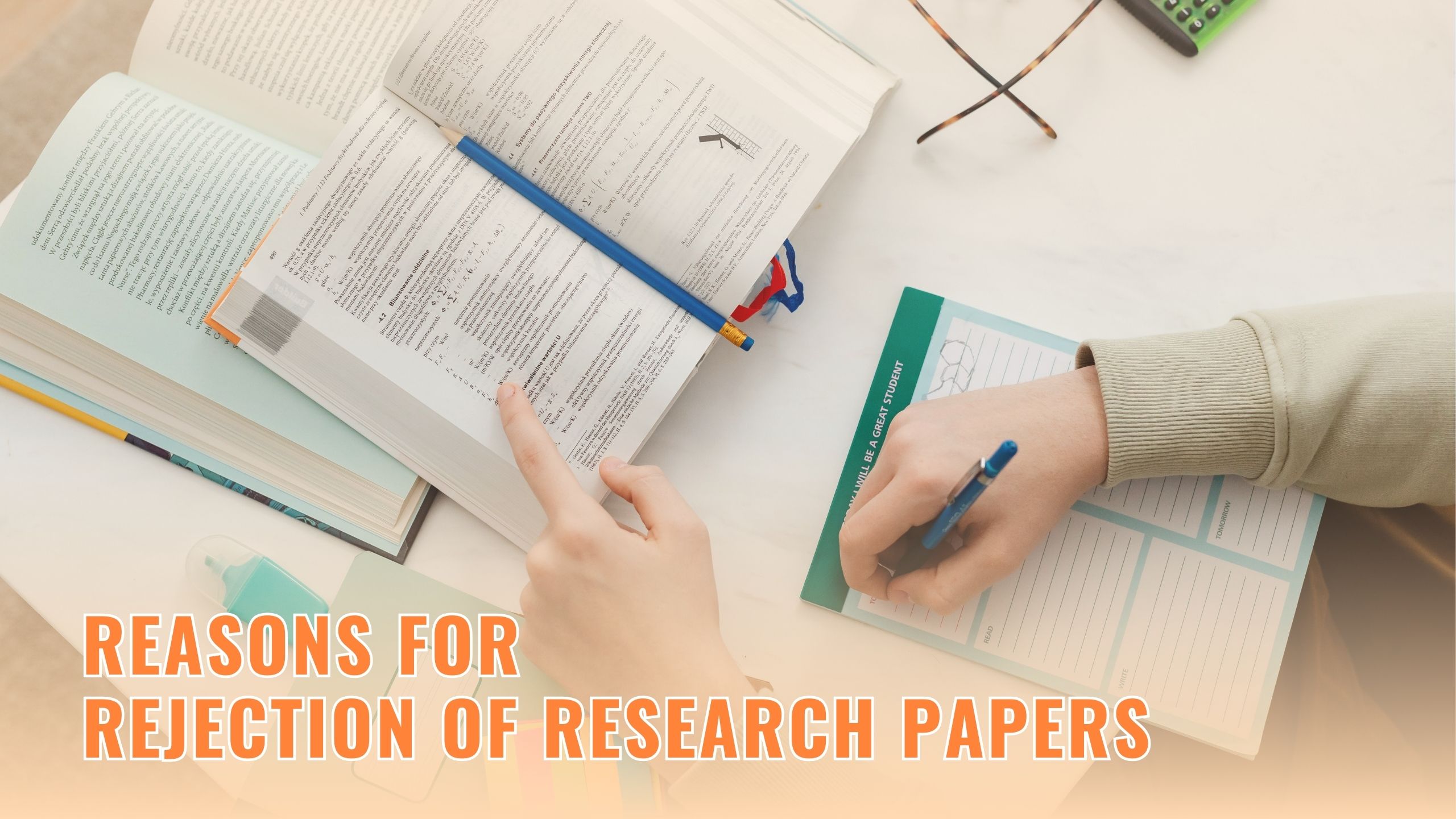For every research paper that is successfully published, there are thousands more that get left behind and there are many reasons for rejection. In fact, manuscript rejection rates can be as high as 97% in some reputed international journal publications. Yet, to assume that these paper rejections are because the manuscripts lack substantive value would be an oversimplification.

The peer review process stands as a pivotal gateway for reliable, high-quality scholarly publishing; permitting only the finest contributions to walk past its threshold. This is why the scientific community lends serious consideration to papers published in peer-reviewed journals. In this article, we look at the possible outcomes of the peer review process, the key reasons for rejection, and some tips for authors to maximize their chance of acceptance.
Possible Outcomes of the Peer Review Process
The outcome of the peer review process2 may vary from one journal to another, and some journals may have their own unique categories or terminology for review outcomes.
- Acceptance: Reviewers find the manuscript fit to be accepted for publication.
- Minor Revisions: Reviewers may recommend minor revisions before accepting the manuscript.
- Major Revisions: Reviewers may recommend significant revisions for manuscripts that have potential; authors are given the chance to revise and resubmit the paper for re-evaluation. This is also called conditional acceptance.
- Reject and Resubmit: Reviewers may recommend rejecting the manuscript in its current form but suggest that the authors could resubmit it for consideration provided they make substantial revisions.
- Rejection: Different than the decision above; this is when reviewers reject manuscripts outright because they do not meet the journal’s standards in terms of originality, quality, or relevance.
- What is the Difference Between Qualitative and Quantitative Research?
- Impact Factors and Significance in Journal Selection
Reasons for Rejection after Peer Review
Let us examine a few key reasons for rejection during the peer review process: 3,4
Absence of Innovation
Within the peer review process, reviewers employ various criteria in their evaluation of manuscripts. Among the top reasons for rejection is failing the litmus test of novelty. Should the manuscript fail to offer substantial and original ideas, which could lead to the advancement of the field, it runs a heightened risk of paper rejection.
Poor Study Design
Another of the common reasons for rejection is poor study design. This includes inappropriate research, biased sampling, unreliable data collection methods, improper statistical analysis, and other shortcomings that compromise the rigor and validity of the research, leading to manuscript rejection.
Insufficient Data
Inadequate data often leads to manuscript rejection during the peer review process, as it indicates that the data collected doesn’t convincingly support the conclusions. Here, the reasons for rejection may include too small sample sizes affecting parameter precision, short follow-up limiting the impact assessment, unreliable data collection, and incorrect statistical analysis that could yield misleading results.
Inadequate Literature Review
For research papers that don’t thoroughly cover existing subject literature or where the literature review is only done on a surface level, it can be a reason for rejection during the peer review process. The main factors behind this verdict are the omission of key studies, non-critical evaluation, outdated sources, and lack of relevance to the research in question.
Poor Language and Readability
Language quality and readability also contribute to manuscript rejection during the peer review process, where poorly written and difficult-to-comprehend papers are delegated to the reject pile. This usually happens where there are too many grammatical errors, excessive jargon that distances relevant non-specialists, convoluted sentence structures, and unclear writing that hampers message clarity.
Here, it’s important to acknowledge the emotional impact of paper rejection on authors, regardless of the reasons for rejection. Here are some things you can do to improve your chances of success.
- What is the Acceptance Rate of Scopus Journal?
- Scopus Indexed Journals: How to Publish Without Paying Fees
How to Sail Through the Peer Review Process?
To significantly improve the likelihood of future submission acceptance, early career researchers can follow these expert tips:5,6
Comprehensive Literature Review: Conducting a comprehensive review to understand the gaps in knowledge within your field lays the foundation for a study that seamlessly integrates with the existing body of knowledge. This process not only aids in identifying areas ripe for investigation but also contributes to the development of precisely defined and feasible research questions.
Suitable Research Design: Carefully evaluate the available design types for their respective strengths and limitations. Your choice should be linked to the type of data your study requires and the specific conclusions you intend to draw.
Robust Data Collection: Choose data collection methods that are acknowledged for their reliability and validity. This ensures that the data you gather accurately represent the topic of investigation, laying a solid foundation for robust and trustworthy findings.
Clear Communication: Ensure transparency when presenting your results, which gives readers a clear and detailed account of your research methods and data analysis. This clarity aids in the evaluation of your study’s credibility and validity. Prioritize simplicity and accuracy in language, employ concise writing techniques, and seek feedback to refine your work for maximum impact.
After dedicating so much time and effort to a research project, getting a manuscript rejection can be disheartening and slow you down. It’s essential to view this positively and use peer review feedback as a chance for growth, allowing you to refine your work and become a better researcher. We hope all the advice and tips provided in this article help you move closer to your goals.
FAQs
1. Why do research papers get rejected?
Research papers can be rejected due to reasons like poor quality of writing, lack of originality, irrelevant research question, insufficient evidence or data, failure to follow submission guidelines, or lack of clarity in the results and conclusions.
2. What are common mistakes in research papers that lead to rejection?
Common mistakes include inadequate literature review, weak hypothesis, poor research design, improper methodology, lack of proper data analysis, and failure to provide meaningful contributions to the field.
3. How important is the journal’s scope for paper acceptance?
The journal’s scope is crucial. If your paper does not align with the journal’s thematic focus or research area, it’s likely to be rejected even if the quality of the research is good.
4. Can a paper be rejected due to language issues?
Yes, language and grammar errors can lead to rejection if they hinder the readability and understanding of the paper. Submitting a paper that isn’t polished can make a negative impression on reviewers.
5. Is plagiarism a reason for rejection of a research paper?
Plagiarism is a major reason for rejection. Journals use plagiarism detection software, and any level of copied content can lead to immediate rejection and potential blacklisting.
6. Does the novelty of the research matter for paper acceptance?
Yes, novelty is critical. If the research is not original or does not offer new insights, it can easily be rejected by reviewers who are looking for innovative contributions to the field.
7. How does the quality of references affect paper acceptance?
Inadequate or outdated references can hurt your paper’s chances of acceptance. Journals prefer research that builds on recent, high-quality sources and demonstrates a solid understanding of current trends in the field.
8. Can a lack of statistical significance cause rejection?
Yes, if your data does not show statistical significance or your methodology is not robust enough to support your conclusions, the paper is likely to be rejected.
9. Can rejection occur because of failure to follow submission guidelines?
Failure to adhere to submission guidelines, such as formatting, citation style, or word count limits, is a common reason for rejection. Always double-check the journal’s instructions.
10. Does the reputation of the author affect paper acceptance?
While reputation can play a role, most journals judge papers based on their scientific merit rather than the author’s standing. However, well-known authors may have a better chance due to their established credibility.



